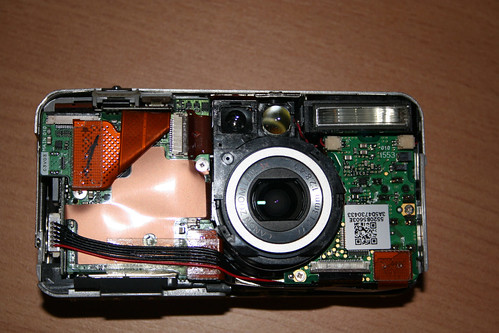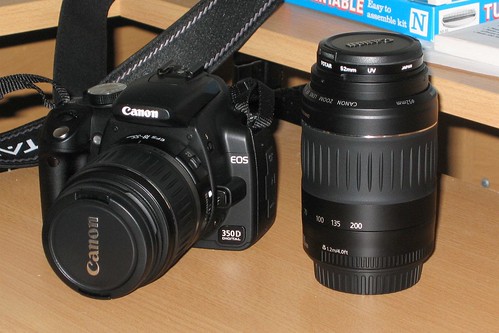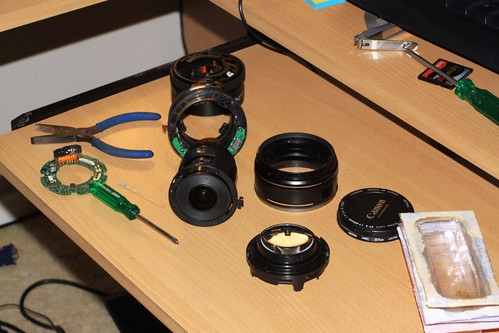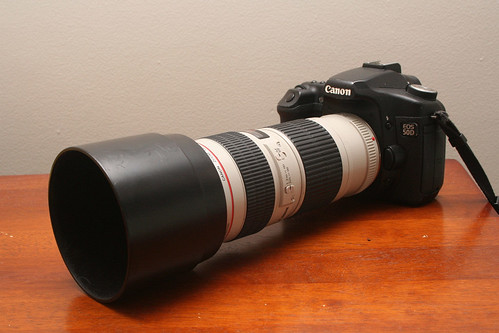To quote cartoon character Homer Simpson:
Extended warranty! How can I lose?
For people like myself extended warranties on electronic items are usually seen as a worthless and high-profit add-on pushed by salespeople with targets to meet. However when I look back the failure rate of my camera equipment over the years, an extended warranty from a reputable company starts to look like a reasonable purchase.
tl;dr: when you take 100,000 photos with a DSLR over two years, it might be worth buying an extended warranty.
Lets take a look at the cameras I have owned over the past seven years…
Canon S50 Powershot
A point and shoot bought in March 2004, two years later (June 2006) the sliding lens cover was damaged when I walked into a pole (!). I fixed the camera myself by pulling it apart, but a few months later (November 2006) the electronics inside died for good.
Summary: died within 3 years of purchase, having taken around 26,000 photos.
Canon EOS 350D
My first DSLR, purchased in May 2006 with a pair of cheap kit lenses. After three years (January 2009) the camera body began to fail intermittently when I pressed a particular spot on the back. I later discovered a screw had come loose inside the body, after disassembling the camera I was able to replace it, resulting in the camera working again. As of 2011 the body is still usable, but my sister has informed me it doesn’t like to work in humid conditions.
Summary: required repairs within 3 years of purchase, having taken around 98,000 photos. It has been on “light duties” since August 2009, but still works.
Canon EF-S 17-85mm f/4-5.6 IS USM
My first expensive lens, purchased in November 2008. Within five months (April 2009) I had to send it back for repairs under warranty, with the power diaphragm and focus assemblies requiring replacement.
Around a year later (February 2010) the lens failed again, becoming jammed at the 17mm end. I was able to pull the lens apart and get it working again to some degree, but the autofocus wasn’t as good as before.
Summary: failed within 3 years, after being my everyday lens for around two years and 50,000 photos.
Canon EOS 50D
My replacement DSLR body, purchased in August 2009. In January 2010 I thought it was broken after falling from the floor of my car to the road, but it was only a misaligned switch behind the battery door that prevented the camera from turning on – I was able to fix this myself.
In August 2011 the camera started to misbehave, with the shutter button becoming intermittently unresponsive, but when a remote shutter release is connected the camera works normally. A preliminary quote says that the circuit board beneath the shutter button requires replacement at a cost of $50 to $100.
Summary: intermittent fault within 2 years, after 110,000 photographs.
Going forward…
Given that a typical extended warranty applies for 3 years after the purchase date, and I have broken three separate cameras and a lens within the same period, I might have actually ended up in front had I paid for the extra coverage.
Next time I buy a camera I might actually investigate the terms and conditions that apply to them.





If you are exclusively buying cameras via Hardly Normal or Australian vendors you are getting gouged already. Cheaper to just order from reputable camera sites in the USA and even with the postage charge it is still cheaper. Some of the point and shoot cameras are more expensive than the last DSLR I bought via the web.
Hardly Normal is about the worst place I can think of for buying consumer electronics such as cameras!
At least for ‘real’ camera shops (like the ones on Elizabeth Street in Melbourne) the higher prices is somewhat justified by the hand holding their staff give you during the buying process. They should also have a full array of camera lenses for you to demo in store on your own camera body – I’ve found that useful myself.